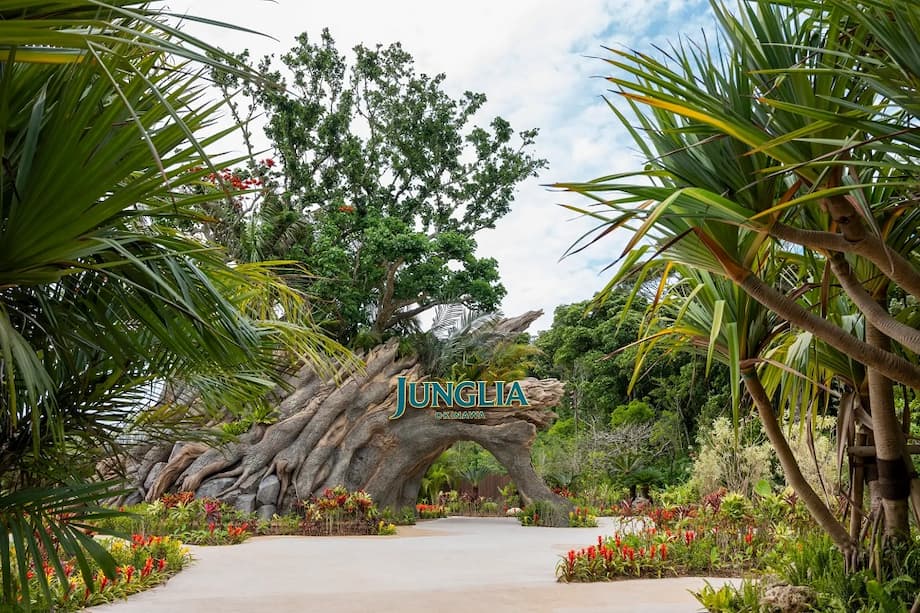Junglia Okinawa: A Bold New Theme Park with a Controversial Pricing Policy
Japan’s tourism landscape has a new star attraction: Junglia Okinawa, a sprawling jungle-themed adventure park that opened its doors in July 2025 in Nakijin, northern Okinawa. With its lush subtropical setting, animatronic dinosaurs, luxury accommodations, and the world’s largest public infinity pool, Junglia aims to redefine the Japanese theme park experience. But as much as the park dazzles with its attractions, it has also ignited debate and curiosity worldwide for its decision to charge foreign tourists significantly more than Japanese residents for entry.
- Junglia Okinawa: A Bold New Theme Park with a Controversial Pricing Policy
- What is Junglia Okinawa?
- Why the Two-Tier Pricing? How Does It Work?
- How Common is Dual Pricing in Japan and Worldwide?
- Economic and Social Impact: Why Okinawa?
- Public Reaction: Controversy or Acceptance?
- Challenges and Opportunities for Junglia
- In Summary
Junglia’s dual pricing policy—a first for a major Japanese theme park—has quickly become a focal point in discussions about tourism, economics, and fairness. As Japan seeks to balance local needs with booming international tourism, Junglia’s approach may signal a new era for the country’s attractions.
What is Junglia Okinawa?
Junglia Okinawa is not just another amusement park. Developed on a former golf course at a cost of 70 billion yen (about $476 million), the park covers 60 hectares (roughly 148 acres) in the forested north of Okinawa’s main island. The project was spearheaded by Katana Inc., a marketing firm led by Tsuyoshi Morioka, who is credited with revitalizing Universal Studios Japan in Osaka. The park’s stated mission is to revitalize the under-visited northern region of Okinawa, stimulate the local economy, and create a new tourism model for Japan and Asia.
Junglia features 22 major attractions and shows, including:
- Dinosaur Safari: An off-road adventure with 20 animatronic dinosaurs, including a thrilling T-Rex chase.
- Horizon Balloon: Hot air balloon rides offering panoramic views of the subtropical forest and coastline.
- Buggy Voltage: Jungle buggy rides through rugged terrain.
- Zip-line and Tree-top Adventures: For adrenaline seekers.
- Spa Junglia: A luxury spa complex with an infinity pool certified by Guinness World Records, open-air baths, and wellness amenities.
- Entertainment Shows: Dance performances, fireworks, and interactive wildlife exhibits featuring local species like the endangered Okinawa rail.
The park also boasts 15 restaurants and cafes, 10 retail shops, and resort accommodations, making it a destination for both day-trippers and overnight guests. Its website is available in English, Chinese, and Korean, reflecting a clear intent to attract international visitors.
Why the Two-Tier Pricing? How Does It Work?
Junglia’s most talked-about feature is its two-tiered ticket pricing system. Japanese residents pay 6,930 yen (about $47) for an adult one-day ticket, while foreign tourists pay 8,800 yen (about $60)—a difference of more than 25 percent. Children’s tickets are similarly structured: 4,950 yen for locals and 5,940 yen for foreigners. The same pricing gap applies to spa and combo tickets.
The policy is based on residency, not ethnicity. Foreign residents of Japan can access the lower local rates by presenting proof of residence, such as a residence card or utility bill. However, the process for verifying residency may vary at different park entrances, and some visitors have raised questions about how strictly the rules will be enforced, especially for access to spa facilities.
Junglia’s management has been transparent about the rationale: the weak yen makes Japan more affordable for overseas visitors, and the park aims to maximize revenue from tourists while keeping prices accessible for locals. This is a departure from other Japanese attractions that have cited overtourism or maintenance costs as reasons for raising prices for non-residents. Instead, Junglia’s approach is a straightforward business decision to capitalize on the higher spending power of inbound tourists.
How Common is Dual Pricing in Japan and Worldwide?
While Junglia’s policy is new for a major Japanese theme park, dual pricing is not unprecedented in Japan or globally. Several Japanese sites, such as Himeji Castle and some temples, have experimented with higher prices for foreign visitors, often to manage overtourism or support local preservation efforts. However, these moves have sometimes sparked backlash, leading to policy revisions. For example, Himeji City considered but ultimately revised a plan to charge foreigners more after concerns about fairness and the difficulty of distinguishing tourists from residents.
Internationally, dual pricing is widespread:
- Thailand: The Emerald Temple (Wat Phra Kaew) charges foreigners 500 baht, while locals enter free.
- India: The Taj Mahal charges foreigners up to 22 times the local fee.
- Madagascar: National parks may charge foreigners up to 33 times more than locals.
- France: The Louvre Museum will introduce higher prices for non-EU citizens in 2026.
Tourist taxes are also on the rise, with cities like Venice and regions like Hawaii implementing new fees to manage visitor impact and fund local services. The Japanese government is considering similar measures, such as a tourist levy in Osaka, to balance economic benefits with quality of life for residents.
Economic and Social Impact: Why Okinawa?
Okinawa is Japan’s southernmost prefecture, famous for its beaches, subtropical climate, and unique culture. While the island attracts nearly 10 million tourists annually, most visitors stay in the central and southern regions, leaving the north underdeveloped. Junglia’s location in Nakijin, about 90 minutes from the capital Naha, is a deliberate effort to spread tourism and economic benefits more evenly across the island.
Local officials and business leaders hope the park will create jobs, stimulate hospitality and retail sectors, and encourage infrastructure improvements. Economic projections are ambitious: Kansai University estimates a ripple effect of 658.3 billion yen and 70,000 jobs in the first year alone, with a potential total impact of 6.8 trillion yen and over 880,000 jobs over 15 years.
Junglia also aims to showcase and protect the Yambaru region, a UNESCO World Heritage site known for its biodiversity and endangered species. By drawing visitors to the north, the park could help support conservation efforts and promote cultural exchange.
Public Reaction: Controversy or Acceptance?
The dual pricing policy has sparked debate both in Japan and abroad. Some critics argue that charging foreigners more is discriminatory or could deter international visitors. Others see it as a pragmatic response to economic realities, especially given the weak yen and the global trend toward differentiated pricing.
So far, there has been little organized backlash against Junglia’s policy. Many observers note that the price difference, while significant in percentage terms, is relatively modest for most overseas tourists. The park’s management emphasizes that the policy is based on residency, not nationality, and is common practice in many countries.
Travel industry analysts suggest that if Junglia’s experiment proves successful, more Japanese attractions may adopt similar models, especially as Japan pursues its goal of attracting 60 million inbound tourists by 2030. The government and private sector are increasingly focused on dispersing tourist crowds, supporting rural economies, and ensuring that tourism revenue benefits local communities.
Expert and Official Perspectives
At Junglia’s opening press conference, Katana CEO Tsuyoshi Morioka described the park as a new model for Japanese tourism, blending adventure, luxury, and environmental stewardship. Japanese Prime Minister Shigeru Ishiba attended the event, underscoring the government’s commitment to developing northern Okinawa and improving transportation links.
In an analysis by Japan Forward, tourism experts noted that dual pricing is a globally accepted tool for supporting infrastructure and local communities. However, they cautioned that public facilities in Japan remain hesitant to adopt such policies due to fairness concerns and the potential for negative publicity.
“Private companies are adopting dual pricing, but public facilities are more hesitant, citing fairness concerns,”
the article explained, highlighting the delicate balance between economic strategy and social acceptance.
Challenges and Opportunities for Junglia
Despite its ambitious vision, Junglia faces several challenges. The park’s remote location, limited name recognition, and lack of established character branding (unlike Disney or Universal Studios) may make it harder to attract repeat visitors. The reliance on AI-generated images and awkward English translations on its website have also drawn some criticism from international audiences.
However, Junglia’s unique blend of adventure, relaxation, and natural beauty could set it apart in a crowded market. By targeting both domestic and international tourists—especially from nearby Asian countries like Taiwan, South Korea, and China—the park hopes to tap into a vast potential audience within a four-hour flight radius.
Junglia’s success or failure may influence the future of theme park development and tourism policy across Japan. If the dual pricing model proves effective, it could become a template for other attractions seeking to balance local affordability with international revenue.
In Summary
- Junglia Okinawa is a new, jungle-themed adventure park in northern Okinawa, Japan, featuring 22 attractions, luxury amenities, and a focus on nature and regional revitalization.
- The park has implemented a dual pricing system, charging foreign tourists over 25 percent more than Japanese residents, with residency (not ethnicity) determining eligibility for local rates.
- This pricing strategy aims to maximize revenue from international visitors while keeping prices accessible for locals, leveraging the weak yen and global trends in tourism pricing.
- Dual pricing is common worldwide but relatively new for major Japanese theme parks, sparking debate about fairness, discrimination, and economic strategy.
- Junglia’s opening is expected to boost the northern Okinawa economy, create jobs, and promote cultural exchange, but the park faces challenges in branding and accessibility.
- The outcome of Junglia’s pricing experiment may shape the future of tourism policy and theme park development in Japan and beyond.




